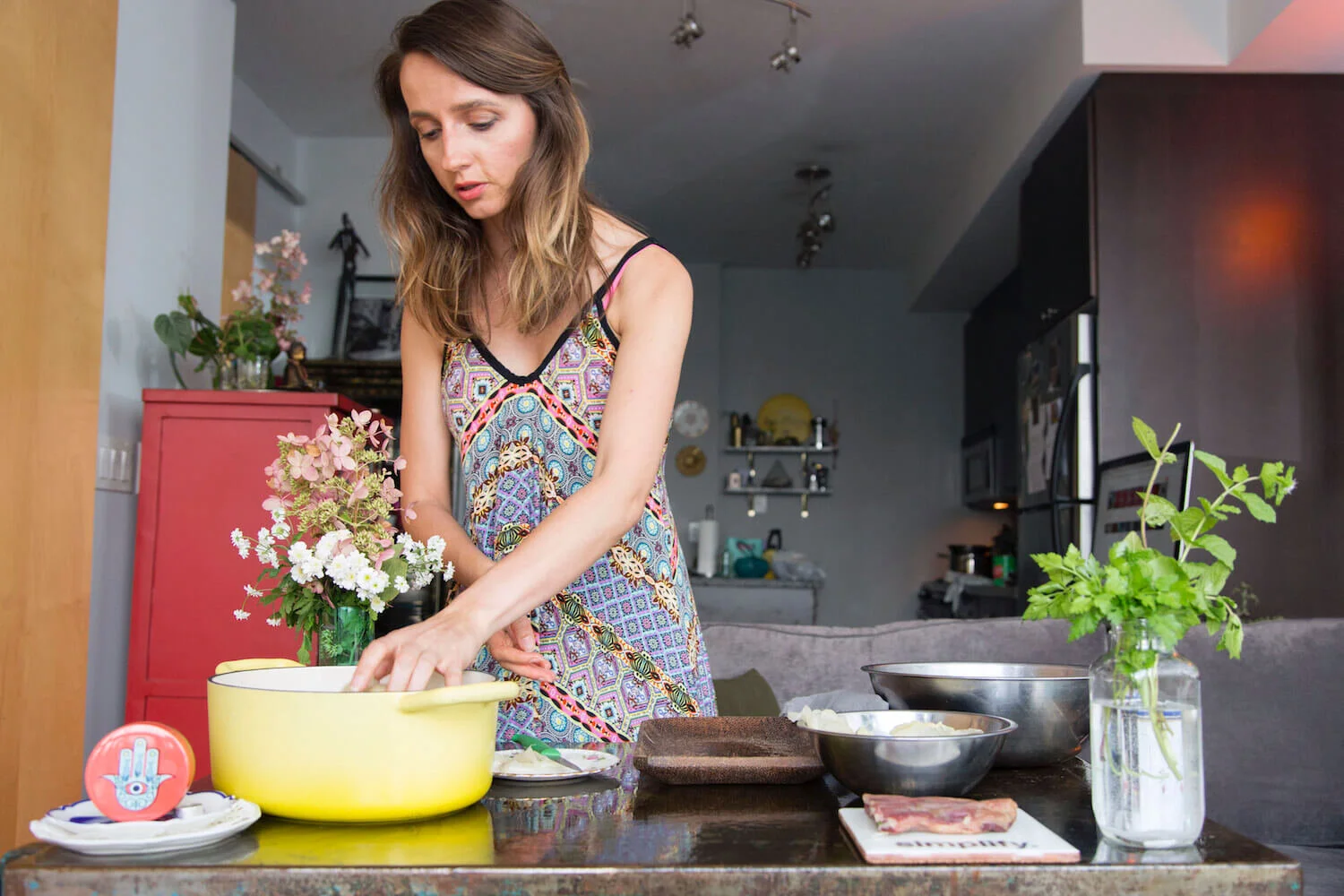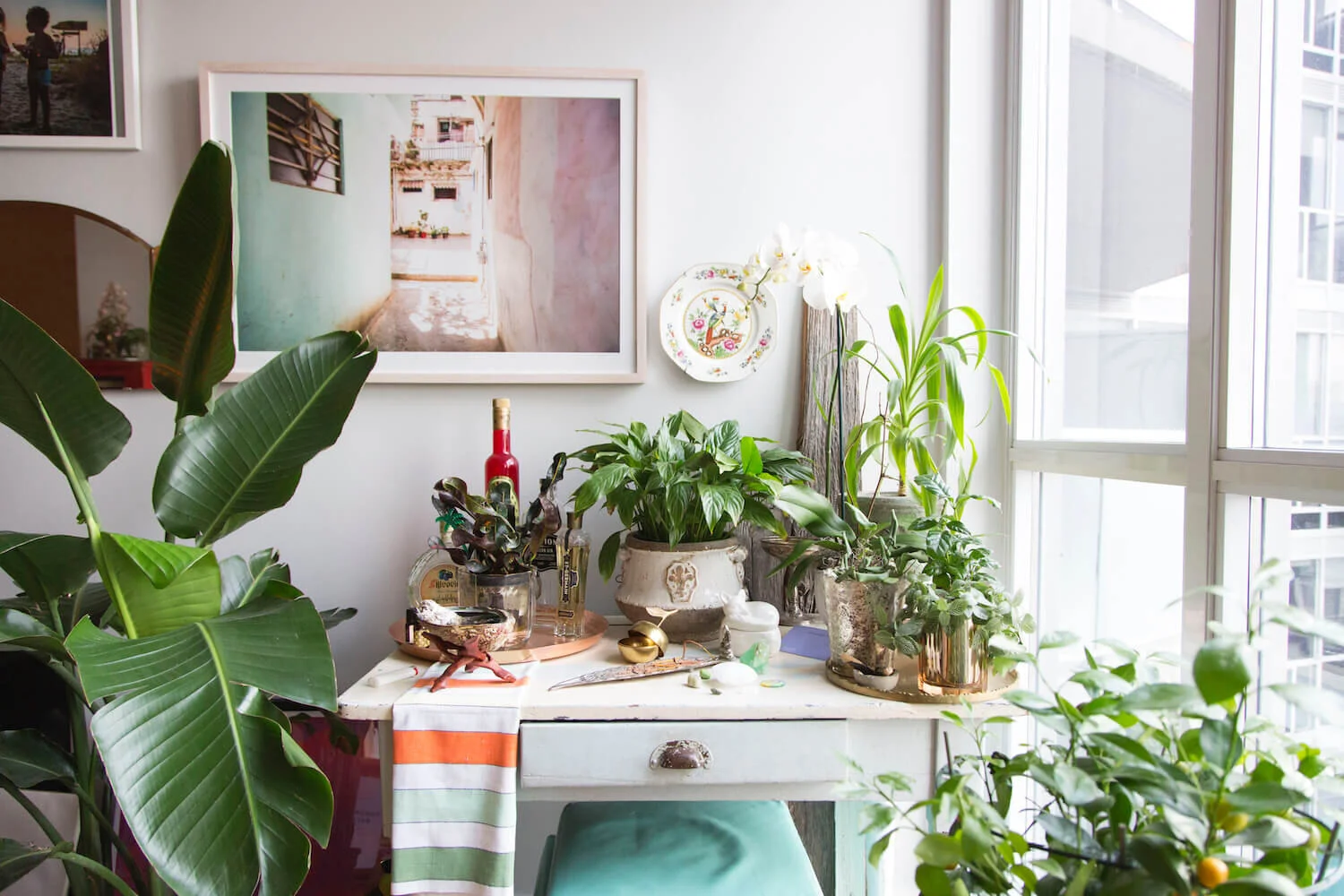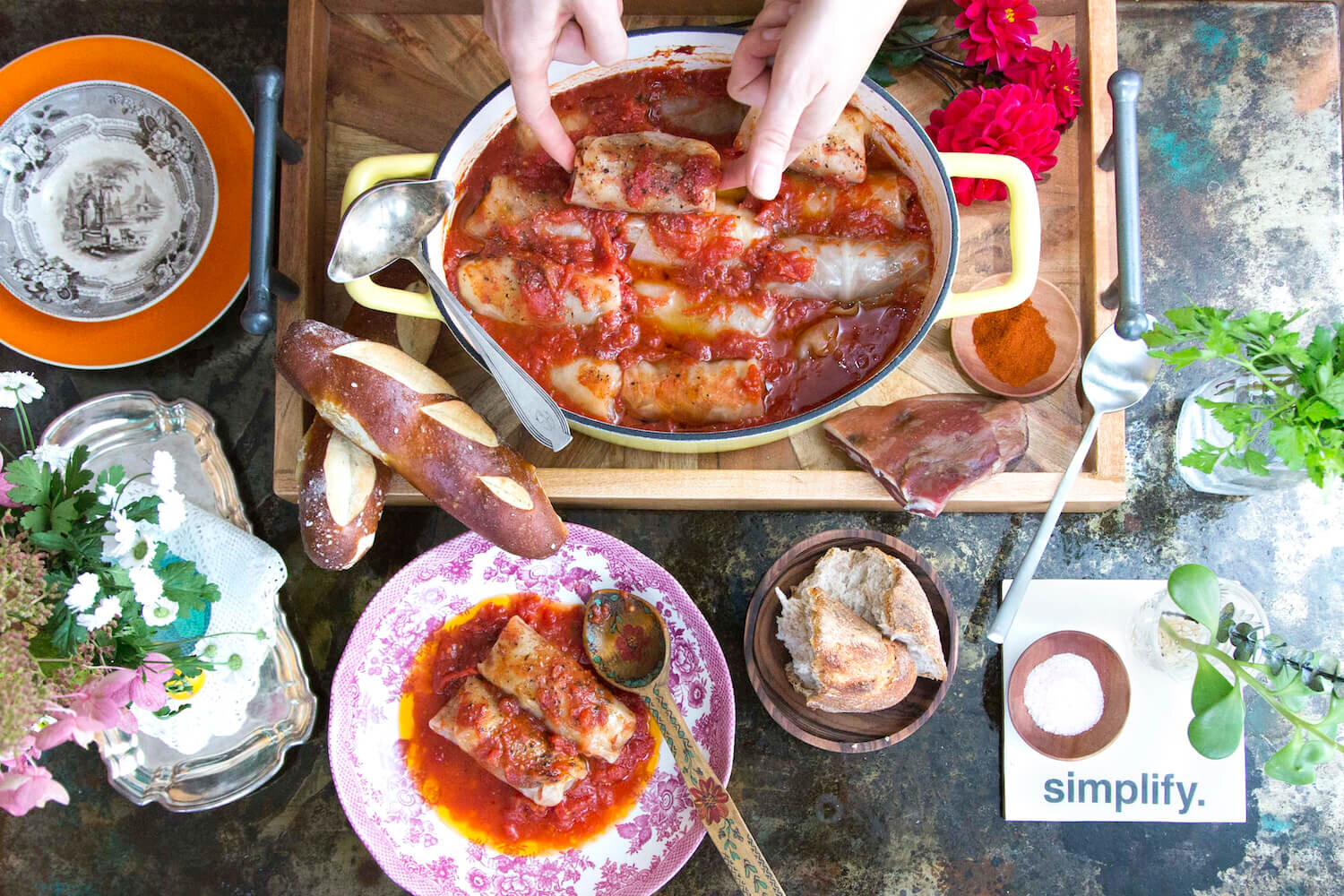IN KSENIJA'S KITCHEN
FROM NOVEMBER 2017 ISSUE OF WEST END PHOENIX
Bosnian soul food the war couldn’t touch
Ksenija Hotic is changing when I arrive at her apartment at Shaw and King. Her friend Yesha, with 3-month-old Sebastian in her arms, ushers me in as Hotic calls from the back that she’ll be out in a minute. Her apartment – full of crystals, decorative plates, doilies and framed photos surrounded by potted plants and hodgepodge bunches of flowers – is a blur of colour. So is Hotic, who emerges in a dress, a kaleidoscope of purples and pinks. “It’s very Bosnian,” she laughs, offering ginger tea. “I get the ginger juice from Bolt on Queen. When I grate it myself it just isn’t strong enough.”
Her dark brown eyes are large and set in a porcelain face framed by chestnut hair. Hotic is a throwback; she looks like a silent film star, her expressive face quick to smile, laugh and frown.
“Life was great growing up in Ključ,”she says of her childhood in western Bosnia, as she brings out ingredients and begins to prepare dinner. “My parents were academics and were very involved in the arts. We had a lot of land outside of the city and we grew all our own grains, like corn and barley. And then we had another piece of land close to the river. We literally lived off the fish in the river, and that is where we grew all our vegetables, closer to the mountains. We would pick mushrooms and go foraging. We were fishing, curing meat, making plum brandy, making our own tea.”
That was before the fighting started. “I was 11 when the war began, and my memory is slightly faded. I think I repressed a lot of good memories, along with the bad ones.”
Hotic is pulling apart pickled cabbage leaves, preparing to stuff them for cabbage rolls. “My mother gets 80 or so heads of cabbage and pickles them for the year. She vacuum-seals them and shares them around so everyone has cabbage for the winter.” She remembers her grandmother Čama pickling cabbage and storing it in the root cellar in Ključ, where it would ferment. “It stank. I hated it when my grandmother would send me to go get cabbage for her.”
It was Čama who taught her how to roll it, too. “My grandmother had dainty hands, so she made me roll the cabbage leaves. My parents worked a lot and were always out and about. I was with my grandmother quite often.”
Čama served fluffy white bread with her cabbage rolls, while her mom’s mom, Emina, served hearty brown bread “so tough you had to chew it for 20 minutes to get through the crust.”
As Hotic expertly rolls the leaves around the filling – a mix of brown rice (she soaks it beforehand to speed up the cooking time), ground beef and lamb, smoked lamb bacon from her dad “and some parsley, garlic – pretty basic” – she recalls her mother’s recipe.
“Her sauce was always a little runny, but Čama’s was thick like gravy, and she used a little more sweet red paprika.”
Hotic makes a version similar to her grandmother’s. She opens a can of whole San Marzano tomatoes and mushes them by hand before dumping them over the plump rolls in her enamelled cast iron pot. After it has cooked in the oven for a while she will add a beurre manié, a mixture of equal parts butter and flour, to thicken the sauce.
I ask her then about the war and how she came to live here, where she has become a fixture as an in-demand photographer.
“The war began in ’92 and we were stuck for six months. We couldn’t get out of our town. And then finally, when we did get out, we had to flee on foot, literally running away. We fled 14 times until we got to safety. We were in different countries. We were on boats, we were on buses, we were on trucks. We walked through I don’t know how many forests and woods trying to hide and find somebody to help.”
She coos to baby Sebastian before continuing. “There was no electricity, there was no water, there was no food.”
The night they left Ključ, her father, Dervis, woke her and told her to get dressed. He had found a safe convoy. She wanted to bring her Polaroid camera and her teddy bear but he wouldn’t let her. “That’s the first time he was rough with me, because I was crying, and he just shook me and said, ‘No.’ ” They were only able to take one small bag each.
“Not that it mattered. That shit got lost quickly. We had nothing.”
The four of them – her father, her mother, Sabiha, and her brother, Anes – were hiding in the woods when the Serbian army attacked. “I don’t even know how we survived that. It was horrific. There was constant gunfire.” She was separated from her parents but stuck by her uncle: “We just ran and ran. There was a minefield we had to run around. Not everyone survived that. There was a mass grave nearby. I saw a soldier rip the earrings from a woman’s ears.”
At one point a soldier grabbed her and held a gun to her head.
“My uncle pleaded with him, told him we had nothing. The soldier looked like a wild animal, crazed. But he let me go.”
It took two days of running through the mountains to get to the relative safety of Travnik, where she was reunited with her parents. From there, they joined a convoy going to Croatia. They were attacked again, by airplanes this time, shooting missiles at the bus they were travelling in.
“You had to get out any way you could – break the windows and get out and run. They were coming for us, we were the only thing on the road. Imagine a jet coming at you. It’s fast. You fucking go.”
A woman in Zagreb took them in and they had to wait for papers from Germany. “Then we took the train through Austria. It was beautiful seeing the Alps,” she remembers, “if just for a few minutes” she smiles. “I was sleeping a lot. We [hadn’t] really slept for half a year.”
They finally stopped running when they landed in Berlin, living there for three years, “trying to have a normal life,” as Hotic puts it. But Berlin was putting restrictions on immigrant visas, and there was a very real possibility that the family could be sent back to Bosnia. After what they’d been through they knew they could never go back. Her parents reached out to friends in Canada and began the process of moving here. In ’95, the family arrived. They were finally safe, but it was still a struggle.
“I got beat up my first day of school. It was so rough at first,” she explains, the homey smell of cabbage rolls rising from the oven. “It took us a good year to understand how things worked.”
Her parents got jobs, her mom in a bakery, then at Sears, her father as a cabinetmaker. Hotic started working in a German deli in Rexdale, playing volleyball at Silverthorn Collegiate and eventually making a gang of friends. Her parents took turns going back to Bosnia to help out, her father teaching for 10 months and then her mother returning to do aid work. When Hotic graduated from high school and started working at CAMH, first as a research analyst, then medical education coordinator, then as an executive assistant to the physician in chief.
She left that job two years ago to take up a career in photography. Now her client list includes Penguin Random House, Playboy, the Drake Hotel and TIFF. She just shot her first cookbook, The Great Shellfish Cookbook, which is being released this spring.
“I’ve been on Shaw Street for seven years. It’s a younger crowd, a lot of artists and creative people.” While she has many local hangouts – “I like desserts at Sud Forno, Bar Fancy for fried chicken, el Almacen for empanadas” – she loves to cook at home.
Her cabbage rolls simmer away, low and slow. “The fermented cabbage tenderizes the meat and you get that sauerkraut flavour.”
While we wait she serves a cabbage and root vegetable soup with lots of fluffy white bread. “It means a lot to me, to have memories that are clean and food oriented. There’s a lot of bad memories of Bosnia, my god. But wherever you are you can put out cabbage rolls, or plum brandy, and start a conversation.”




